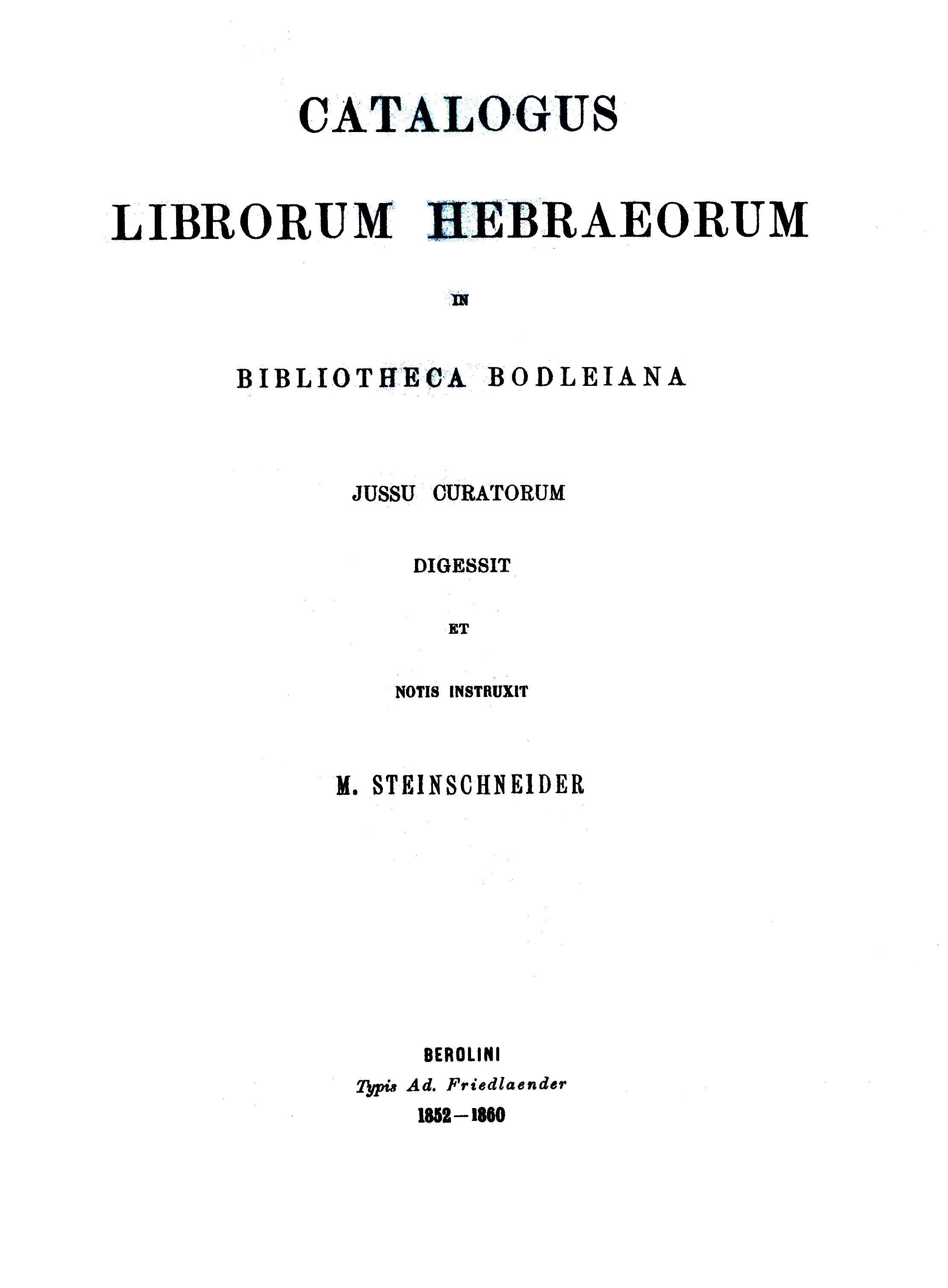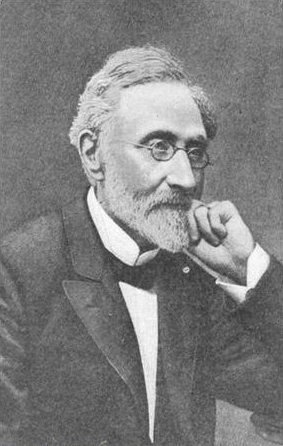|
Hillel Ben Samuel
Hillel ben Samuel (c. 1220 – Forlì, c. 1295) was an Italian physician, philosopher, and Talmudist. He was the grandson of the Talmudic scholar Eliezer ben Samuel of Verona. Life He spent his youth at Barcelona, where he studied the Talmud and natural sciences, his teacher in the study of the former being Yonah Gerondi, distinguished for his piety and rabbinical scholarship. Hillel, witnessing Gerondi's sincere repentance for his behavior in the Maimonides controversy at Montpellier, himself began to study Maimonides' religio-philosophical works, of which he became one of the most enthusiastic admirers. He studied medicine at Montpellier, and practised successively at Rome, where he formed a friendship with the papal physician in ordinary, Maestro Isaac Gajo; at Capua (1260–1271), where, having attained fame as physician and philosopher, he lectured on philosophy, among his hearers being Abraham Abulafia; and at Ferrara, where he had relatives. In his old age he retired to ... [...More Info...] [...Related Items...] OR: [Wikipedia] [Google] [Baidu] |
Forlì
Forlì ( , ; rgn, Furlè ; la, Forum Livii) is a ''comune'' (municipality) and city in Emilia-Romagna, Northern Italy, and is the capital of the province of Forlì-Cesena. It is the central city of Romagna. The city is situated along the Via Emilia, to the east of the Montone river, and is an important agricultural centre. The city hosts some of Italy's culturally and artistically significant landmarks; it is also notable as the birthplace of painters Melozzo da Forlì and Marco Palmezzano, humanist historian Flavio Biondo, physicians Geronimo Mercuriali and Giovanni Battista Morgagni. The University Campus of Forlì (part of the University of Bologna) is specialized in Economics, Engineering, Political Sciences as well as the Advanced school of Modern Languages for Interpreters and Translators (SSLMIT). Climate The climate of the area is humid subtropical (''Cfa'' in the Köppen climate classification) with Mediterranean features, fairly mitigated by the relative closeness ... [...More Info...] [...Related Items...] OR: [Wikipedia] [Google] [Baidu] |
Talmud
The Talmud (; he, , Talmūḏ) is the central text of Rabbinic Judaism and the primary source of Jewish religious law (''halakha'') and Jewish theology. Until the advent of modernity, in nearly all Jewish communities, the Talmud was the centerpiece of Jewish cultural life and was foundational to "all Jewish thought and aspirations", serving also as "the guide for the daily life" of Jews. The term ''Talmud'' normally refers to the collection of writings named specifically the Babylonian Talmud (), although there is also an earlier collection known as the Jerusalem Talmud (). It may also traditionally be called (), a Hebrew abbreviation of , or the "six orders" of the Mishnah. The Talmud has two components: the Mishnah (, 200 CE), a written compendium of the Oral Torah; and the Gemara (, 500 CE), an elucidation of the Mishnah and related Tannaitic writings that often ventures onto other subjects and expounds broadly on the Hebrew Bible. The term "Talmud" may refer to eith ... [...More Info...] [...Related Items...] OR: [Wikipedia] [Google] [Baidu] |
Moritz Steinschneider
Moritz Steinschneider (30 March 1816, Prostějov, Moravia, Austrian Empire – 24 January 1907, Berlin) was a Moravian bibliographer and Orientalist. He received his early instruction in Hebrew from his father, Jacob Steinschneider ( 1782; March 1856), who was not only an expert Talmudist, but was also well versed in secular science. The house of the elder Steinschneider was the rendezvous of a few progressive Hebraists, among whom was his brother-in-law, the physician and writer Gideon Brecher. Education At the age of six Steinschneider was sent to the public school, which was still an uncommon choice for Jews in the Austro-Hungarian empire at the time; and at the age of thirteen he became the pupil of Rabbi Nahum Trebitsch, whom he followed to Mikulov, Moravia in 1832. The following year, in order to continue his Talmudic studies, he went to Prague, where he remained until 1836, attending simultaneously the lectures at the Normal School. In 1836 Steinschneider we ... [...More Info...] [...Related Items...] OR: [Wikipedia] [Google] [Baidu] |
Heinrich Grätz
Heinrich Graetz (; 31 October 1817 – 7 September 1891) was amongst the first historians to write a comprehensive history of the Jewish people from a Jewish perspective. Born Tzvi Hirsch Graetz to a butcher family in Xions (now Książ Wielkopolski), Grand Duchy of Posen, in Prussia (now in Poland), he attended Breslau University, but since Jews at that time were barred from receiving Ph.D.s there, he obtained his doctorate from the University of Jena.''Encyclopaedia Judaica'' (2007, 2nd ed.) entry on "Graetz, Heinrich," by Shmuel Ettinger and Marcus Pyka After 1845 he was principal of the school of the [...More Info...] [...Related Items...] OR: [Wikipedia] [Google] [Baidu] |
Marco Mortara
Marco Mortara (born at Viadana, 7 May 1815; died at Mantua, 2 February 1894) was an Italian rabbi and scholar. Having graduated from the rabbinical college of Padua in 1836, he was called as rabbi to Mantua in 1842, and occupied this position until his death. He was very conservative in his religious views and opposed the abolition of the second day of the holy days which had been planned by some of the liberal members of his congregation ( Eleazar Horowitz, Responsa, No. 131, Vienna, 1870). As a true disciple of Samuel David Luzzatto he was a strong opponent of Cabala, which involved him in a heated controversy with Elijah Benamozegh. In his will he wrote his epitaph, containing merely biographical data, and expressed the wish that no sermon should be preached at his funeral and no eulogy published in the papers. Besides many sermons and articles, published in German, Hebrew, French, and Italian periodicals, he wrote textbooks for religious instruction, essays on religious quest ... [...More Info...] [...Related Items...] OR: [Wikipedia] [Google] [Baidu] |
Haggadah
The Haggadah ( he, הַגָּדָה, "telling"; plural: Haggadot) is a Jewish text that sets forth the order of the Passover Seder. According to Jewish practice, reading the Haggadah at the Seder table is a fulfillment of the mitzvah to each Jew to tell their children the story from the Book of Exodus about God bringing the Israelites out of slavery in Egypt, with a strong hand and an outstretched arm. History Authorship According to Jewish tradition, the Haggadah was compiled during the Mishnaic and Talmudic periods, although the exact date is unknown. It could not have been written earlier than the time of Judah bar Ilai (circa 170 CE), who is the latest tanna to be quoted therein. Abba Arika and Samuel of Nehardea (circa 230 CE) argued on the compilation of the Haggadah, and hence it had not been completed as of then. Based on a Talmudic statement, it was completed by the time of "Rav Nachman". There is a dispute, however, to which Rav Nachman the Talmud was referring: Acc ... [...More Info...] [...Related Items...] OR: [Wikipedia] [Google] [Baidu] |
Liber De Causis
The ("Book of Causes") is a philosophical work composed in the 9th century that was once attributed to Aristotle and that became popular in the Middle Ages, first in Arabic and Islamic countries and later in the Latin West. The real authorship remains a mystery, but most of the content is taken from a work by the Neoplatonic philosopher Proclus called '' Elements of Theology''. This was first noticed by Thomas Aquinas, following William of Moerbeke's translation of Proclus' work into Latin. As such it is now attributed to a pseudo-Aristotle. Title The original title in Arabic was , "The book of Aristotle's explanation of the pure good". The title came into use following the translation into Latin by Gerard of Cremona. The work was also translated into Armenian and Hebrew. Many Latin commentaries on the work are extant.Edited (some only partially) in . References Text and translations Arabic * (edition of the Arabic) * (edition of the Arabic with German translation) Latin * ... [...More Info...] [...Related Items...] OR: [Wikipedia] [Google] [Baidu] |
Christian Mortalism
Christian mortalism is the Christian belief that the human soul is not naturally immortal and may include the belief that the soul is “sleeping” after death until the Resurrection of the Dead and the Last Judgment, a time known as the intermediate state. "Soul sleep" is often used as a pejorative term, so the more neutral term "mortalism" was also used in the nineteenth century, and "Christian mortalism" since the 1970s. Historically the term psychopannychism was also used, despite problems with the etymology and application. The term thnetopsychism has also been used; for example, Gordon Campbell (2008) identified John Milton as believing in the latter. Soul sleep stands in contrast with the traditional Christian belief that immortal souls immediately go to heaven, hell, or purgatory after death. Soul sleep has been taught by several theologians and church organizations throughout history while also facing opposition from aspects of Christian organized religion. The Cathol ... [...More Info...] [...Related Items...] OR: [Wikipedia] [Google] [Baidu] |
Thomas Aquinas
Thomas Aquinas, OP (; it, Tommaso d'Aquino, lit=Thomas of Aquino; 1225 – 7 March 1274) was an Italian Dominican friar and priest who was an influential philosopher, theologian and jurist in the tradition of scholasticism; he is known within the tradition as the , the , and the . The name ''Aquinas'' identifies his ancestral origins in the county of Aquino in present-day Lazio, Italy. Among other things, he was a prominent proponent of natural theology and the father of a school of thought (encompassing both theology and philosophy) known as Thomism. He argued that God is the source of both the light of natural reason and the light of faith. He has been described as "the most influential thinker of the medieval period" and "the greatest of the medieval philosopher-theologians". His influence on Western thought is considerable, and much of modern philosophy is derived from his ideas, particularly in the areas of ethics, natural law, metaphysics, and political theory. ... [...More Info...] [...Related Items...] OR: [Wikipedia] [Google] [Baidu] |
Christians
Christians () are people who follow or adhere to Christianity, a monotheistic Abrahamic religion based on the life and teachings of Jesus Christ. The words ''Christ'' and ''Christian'' derive from the Koine Greek title ''Christós'' (Χριστός), a translation of the Biblical Hebrew term ''mashiach'' (מָשִׁיחַ) (usually rendered as ''messiah'' in English). While there are diverse interpretations of Christianity which sometimes conflict, they are united in believing that Jesus has a unique significance. The term ''Christian'' used as an adjective is descriptive of anything associated with Christianity or Christian churches, or in a proverbial sense "all that is noble, and good, and Christ-like." It does not have a meaning of 'of Christ' or 'related or pertaining to Christ'. According to a 2011 Pew Research Center survey, there were 2.2 billion Christians around the world in 2010, up from about 600 million in 1910. Today, about 37% of all Christians live in the Am ... [...More Info...] [...Related Items...] OR: [Wikipedia] [Google] [Baidu] |
Jews
Jews ( he, יְהוּדִים, , ) or Jewish people are an ethnoreligious group and nation originating from the Israelites Israelite origins and kingdom: "The first act in the long drama of Jewish history is the age of the Israelites""The people of the Kingdom of Israel and the ethnic and religious group known as the Jewish people that descended from them have been subjected to a number of forced migrations in their history" and Hebrews of historical History of ancient Israel and Judah, Israel and Judah. Jewish ethnicity, nationhood, and religion are strongly interrelated, "Historically, the religious and ethnic dimensions of Jewish identity have been closely interwoven. In fact, so closely bound are they, that the traditional Jewish lexicon hardly distinguishes between the two concepts. Jewish religious practice, by definition, was observed exclusively by the Jewish people, and notions of Jewish peoplehood, nation, and community were suffused with faith in the Jewish God, ... [...More Info...] [...Related Items...] OR: [Wikipedia] [Google] [Baidu] |




